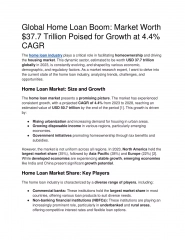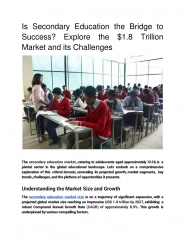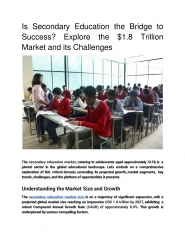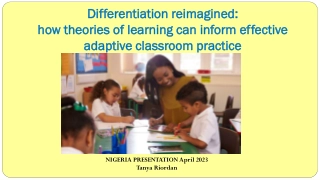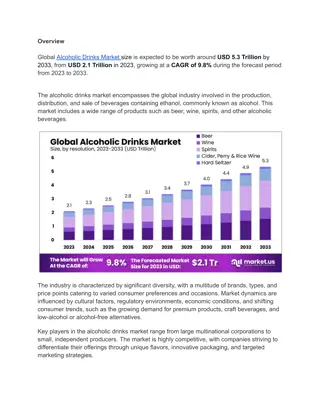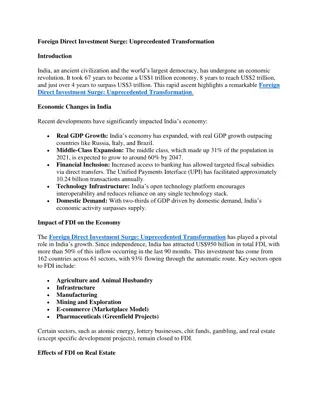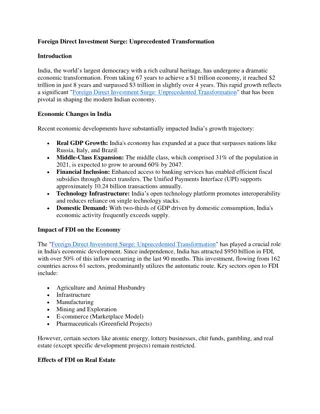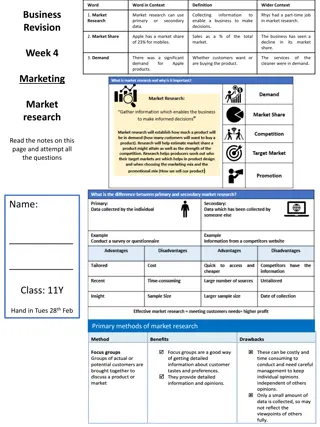Building a Skilled India A ₹12.3 Trillion Market Reimagining Secondary Education
The secondary education market size in India is poised to soar, with projections indicating a monumental worth of u20b912.3 trillion (USD 150 billion) by 2027, boasting an impressive Compound Annual Growth Rate (CAGR) of 14%.
Download Presentation

Please find below an Image/Link to download the presentation.
The content on the website is provided AS IS for your information and personal use only. It may not be sold, licensed, or shared on other websites without obtaining consent from the author. Download presentation by click this link. If you encounter any issues during the download, it is possible that the publisher has removed the file from their server.
E N D
Presentation Transcript
Building a Skilled India: A 12.3 Trillion Market Reimagining Education Secondary In India, the secondary education market targeting students aged 12-18 is undergoing a remarkable transformation,characterized by substantial growth and evolving trends. Let's delve intothe intricacies of this dynamic sector and uncoverits promisingfuture. Market Growth and Projections The secondary education market size in India is poised to soar, with projections indicating a monumental worth of 12.3 trillion (USD 150 billion) by 2027, boasting an impressive Compound Annual Growth Rate (CAGR) of 14%. This growth trajectory is fueledbyseveralkeyfactors. Driving Forces Behind Growth
Demographic Dividend: India's youthful population acts as a catalyst, fueling the demandfor secondaryeducationanddrivingenrollmentratesupwards. Rising Aspirations: With a heightened awareness of the pivotal role education plays in shaping career prospects,there's a surge in student enrollments across the secondaryeducationspectrum. Government Initiatives: Schemes such as "Samagra Shiksha" are pivotal in enhancing accessibility and augmenting the quality of secondary education across the nation. Understanding the Market Landscape Public vs. Private Institutions Government schools currently command a lion's share of enrollment, accounting for approximately 80% of the market. However, private institutions are steadily gaining ground, constituting the remaining 20%. These private schools offer diverse streams and advanced facilities,attractinga discerningsegmentof thestudentpopulation. Demand and Focus There's an escalating demand for quality education, coupled with a perceptible shift towards holistic development and skill enhancement alongside conventional academic pursuits. Emerging Trends in Secondary Education Let's discuss some of the secondary education market trends in India: Diversification The landscape of secondary education is witnessing a paradigm shift with the expansion of vocational training options alongside traditional academic streams. This diversification aims to cater to the multifaceted aspirations of students and equip them with versatile skill sets. Focus on Skills
There's a growing emphasis on fostering life skills, communication abilities, and critical thinking prowess among students to prepare them adequately for the dynamic challenges of themodernworkforce. Tech Integration The integration of educational technology (edtech) tools is revolutionizing the secondary education domain. From personalized learning experiences to enhanced online resources and improved assessment methodologies, technology is reshaping the landscape. educational Addressing Challenges and Exploring Opportunities Challenges Quality Variations: Disparities in educational quality persist, particularly among governmentschools in ruralareas. Teacher Training & Shortages: The need for comprehensive teacher training programs to enhance pedagogical skills and address subject-specific shortages remains a pressingconcern. Streaming & Affordability: Limited access to quality vocational training options and specialized streams pose challenges, especially for students hailing from economicallydisadvantagedbackgrounds. Opportunities
Public-Private infrastructure and enhancing teacher training programs in government schools hold immensepotential. Skilling & Vocational Training: The development of affordable and accessible vocationaltraining initiatives aligned with industryrequisites can bridge existing skill gaps and fosteremployability. Regional Language Edtech: Initiatives aimed at developing online learning platforms and resources in regional languages have the potential to democratize access to qualityeducationandbridgethedigitaldivide. Partnerships: Collaborative efforts aimed at bolstering Conclusion The secondary education market in India stands at the threshold of unprecedented growth and transformation.By addressing existing challenges,nurturing skill development, and harnessing the power of technology, stakeholders can pave the way inclusive, equitable, and future-ready secondary education system that empowers every studentacross the nation. for a more






